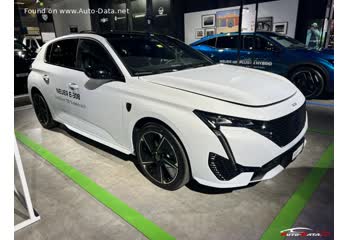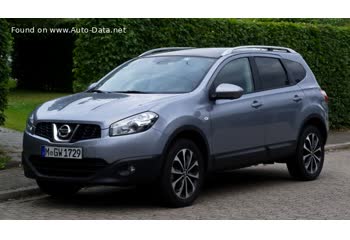Everything you need to know about specifications and performance - Peugeot 308 2011 - 1.6 HDi (92 Hp)

Overview:
What is the engine capacity of a Peugeot 308 2011?
The engine capacity of the Peugeot 308 2011 is 1560.
Peugeot 308 2011 How many horsepower?
The engine power of the Peugeot 308 2011 is 92 Hp @ 4000 rpm..
What is the Peugeot 308 2011 engine?
Peugeot 308 2011 engine is 9HJ DV6ATED4. (Click to see other cars using the same engine)
How much gasoline does a Peugeot 308 2011 consume?
The Peugeot 308 2011 consumes 4.1 liters of gasoline per 100 km
General:
Brand: Peugeot
Model: 308
Generation: I (Phase II, 2011)
Modification (Engine): 1.6 HDi (92 Hp)
Start of production: 2011
End of production: 2013
Powertrain Architecture: Internal Combustion Engine
Body type:Hatchback
Seats: 5
Doors: 5
Engine:
Engine systems: Particulate filter
Power: 92 hp @ 4000 rpm.
Power per litre: 59 hp/l
Torque: 230 nm @ 1750 rpm.
Engine Model/Code:9HJ DV6ATED4
Engine displacement: 1560
Number of cylinders: 4
Engine configuration: Inline
Number of valves per cylinder: 2
Fuel injection system: Diesel Commonrail
Engine aspiration: Turbocharger, Intercooler
Valvetrain: SOHC
Engine oil capacity: 3.75 l
Coolant: 6 l
Engine layout: Front, Transverse
Cylinder Bore: 75 mm
Piston Stroke: 88.3 mm
Compression ratio: 16:1
Performance:
Fuel Type: Diesel
Fuel consumption (economy) - urban: 5 l/100 km
Fuel consumption (economy) - extra urban: 3.6 l/100 km
Fuel consumption (economy) - combined (NEDC): 4.1 l/100 km
Fuel consumption (economy) - urban (NEDC): 5 l/100 km
Fuel consumption (economy) - extra urban (NEDC): 3.6 l/100 km
Fuel consumption (economy) - combined: 4.1 l/100 km
Emission standard: Euro 5
Acceleration 0 - 100 km/h: 12.4 sec
Acceleration 0 - 62 mph: 12.4 sec
Maximum speed: 181 km/h
Weight-to-power ratio: 13.9 kg/Hp, 72.2 Hp/tonne
Weight-to-torque ratio: 5.5 kg/Nm, 180.4 Nm/tonne
Acceleration 0 - 60 mph: 11.8 sec
Space:
Kerb Weight (kg): 1275
Max. weight (kg): 1800
Max. roof load: 75 kg
Max load (kg): 525
Trunk (boot) space - maximum: 1201 l
Trunk (boot) space - minimum: 348 l
Permitted trailer load with brakes (12%): 1300 kg
Fuel tank capacity: 60 l
Permitted trailer load without brakes: 635 kg
Permitted towbar download: 60 kg
dimensions:
Length: 4276 mm
Width: 1815 mm
Height: 1498 mm
wheelbase: 2608 mm
Width including mirrors: 2038 mm
Front track: 1526 mm
Rear (Back) track: 1521 mm
Front overhang: 926 mm
Rear overhang: 742 mm
Minimum turning circle (turning diameter): 10.7 m
Powertrain, Suspension and Brakes:
Drivetrain Architecture: The Internal combustion Engine (ICE) drives the front wheels of the vehicle.
Drive wheel: Front wheel drive
Number of gears and type of gearbox: 5 gears, manual transmission
Front brakes: Ventilated discs
Rear brakes: Disc
Assisting systems: ABS (Anti-lock braking system)
Steering type: Steering rack and pinion
Power steering: Hydraulic Steering
Tires size: 195/65 R15
Wheel rims size: 6.5J x 15
Front suspension: Independent type McPherson
Rear suspension: Elastic beam
See also

Last generation.
Its production began in 2023 until 2025

Other generation.
Its production began in 2010 until 2011

Same production year and almost the same engine capacity.
Its production began in 2011 until 2013

Same production year and almost the same engine capacity.
Its production began in 2011 until 2014

Write a comment